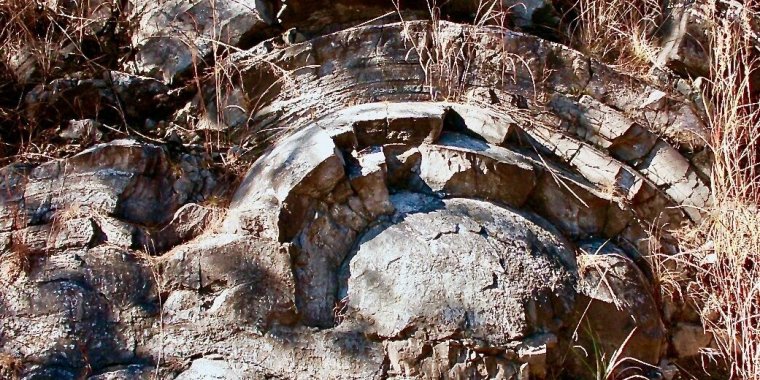| News / Science News |
Volcanic activity and changes in Earth's mantle were key to rise of atmospheric oxygen
Oxygen first accumulated in the Earth's atmosphere about 2.4 billion years ago, during the Great Oxidation Event. A long-standing puzzle has been that geologic clues suggest early bacteria were photosynthesizing and pumping out oxygen hundreds of millions of years before then.

These fossil stromatolites in South Africa contained records of early life central to the research. Photo: David Catling
Something was holding back oxygen's rise. A new interpretation of rocks billions of years old finds that volcanic gases are the likely culprits.
"This research revives a classic hypothesis for the evolution of atmospheric oxygen," said lead author Shintaro Kadoya. "The data demonstrates that an evolution of the mantle of the Earth could control an evolution of the atmosphere of the Earth, and possibly an evolution of life."
Multicellular life needs a concentrated supply of oxygen, so the accumulation of oxygen is key to the evolution of oxygen-breathing life on Earth.
"If changes in the mantle controlled atmospheric oxygen, the mantle might ultimately set a tempo of the evolution of life," Kadoya said.
Added co-author David Catling, "The supply of oxidizable volcanic gases was capable of gobbling up photosynthetic oxygen for hundreds of millions of years after photosynthesis evolved. But as the mantle itself became more oxidized, fewer oxidizable volcanic gases were released. Then oxygen flooded the air when there was no longer enough volcanic gas to mop it all up."
That has implications for understanding the emergence of complex life on Earth and the possibility of life on other planets.
"The study indicates that we cannot exclude the mantle of a planet when considering the evolution of the surface and life of a planet," Kadoya said.
YOU MAY ALSO LIKE





